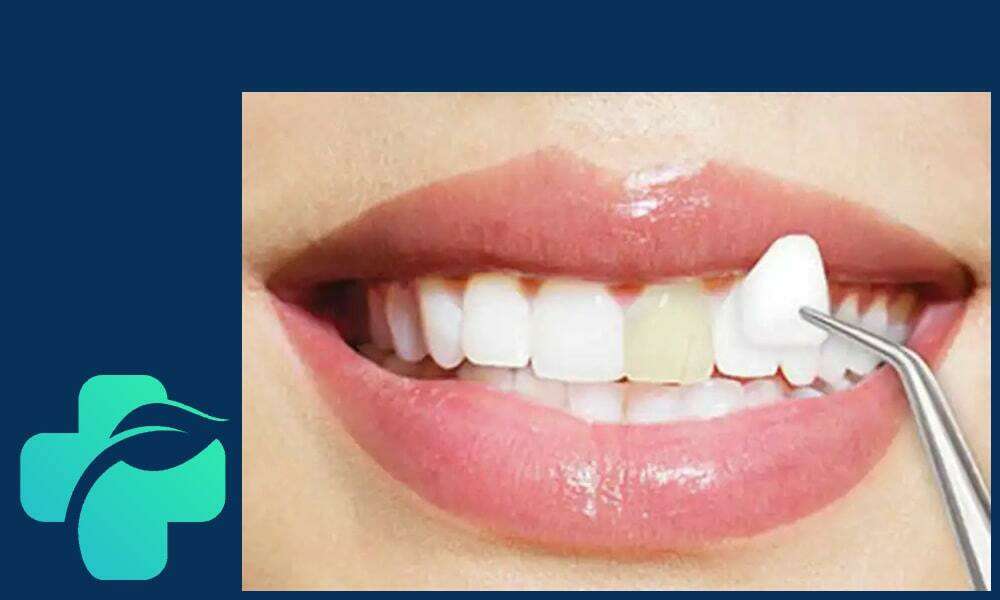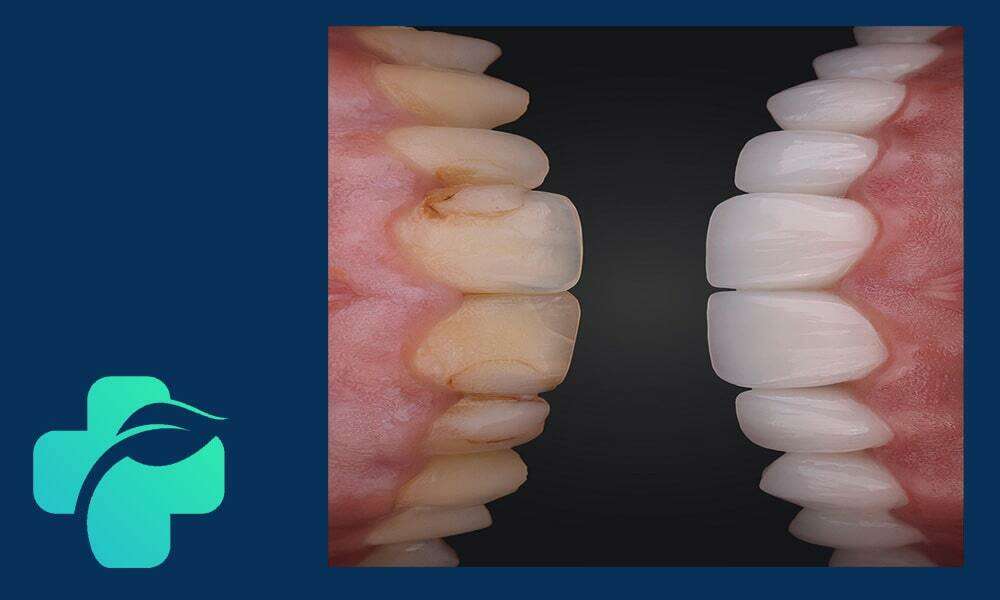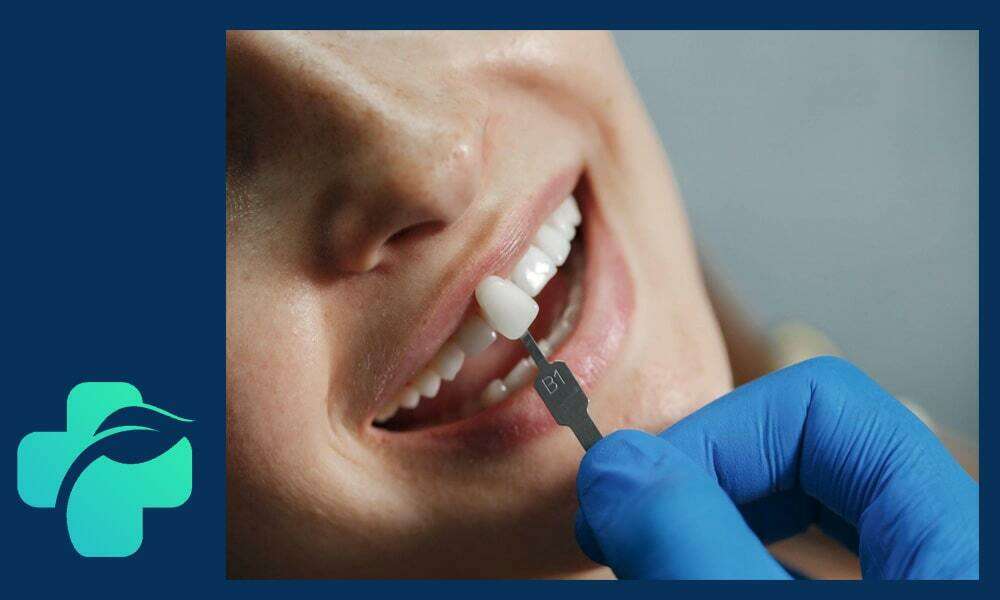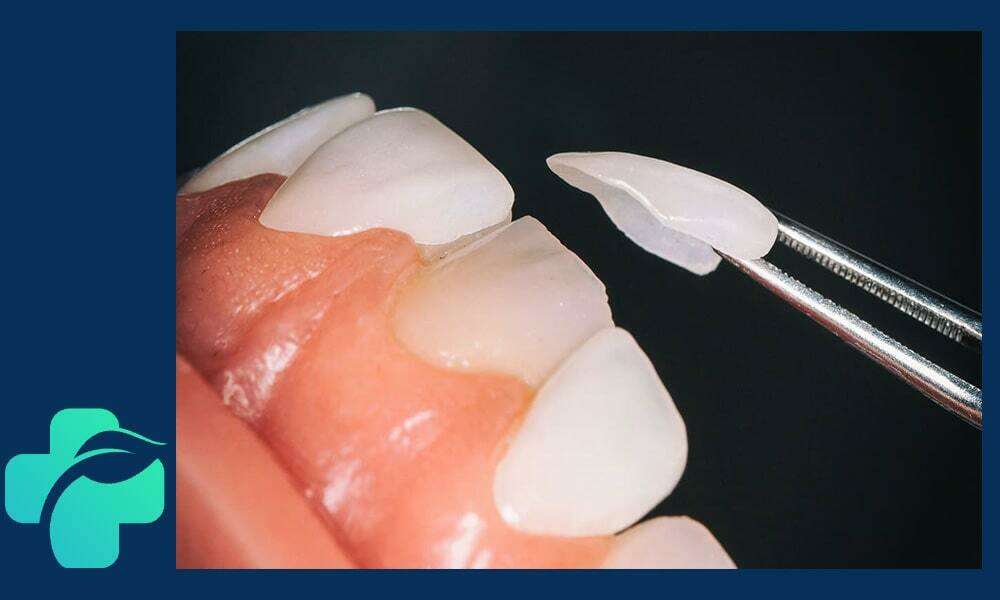Pediatric Root Canal Services
Dental veneers are known as one of the best methods for smile design correction, providing your smile with a beautiful, natural, and attractive appearance through a ceramic coating on the teeth.
If you’re looking for a major transformation in the beauty of your teeth, dental veneers are an excellent choice. In this article, we’ll take a comprehensive look at the benefits, types, procedure, costs, and post-installation care of veneers so you can make the best decision for your dental health and beauty.
How are dental veneers applied?
Dental veneers, also called laminate veneers, are thin shells made of ceramic or porcelain that are bonded to the front surface of the teeth. These thin layers are used to improve the color, shape, and size of teeth and to cover aesthetic imperfections.
In some cases, to achieve a more harmonious and beautiful result, it may be necessary to lengthen the tooth crown before applying the veneer so that the surface is better prepared for adhesion and looks more natural.
The veneer installation process is carried out in several stages:
Examination and consultation with the dentist to determine cosmetic and health needs.
Tooth preparation by gently removing a very thin layer of enamel.
Taking impressions and fabricating the ceramic veneer in the laboratory.
Bonding and final adjustment of the veneers on the teeth.
These steps require precision and expertise to ensure the veneers are both natural-looking and durable.
Types of dental veneers and their differences
Dental veneers come in two common types: ceramic veneers and composite veneers. Ceramic veneers are made from high-quality ceramic, offering greater strength and beauty but at a slightly higher cost. In contrast, composite materials are applied directly to the teeth and are more affordable, but they don’t last as long as ceramic veneers.
If you’re looking for affordable veneers in Tehran, composite veneers can be an economical option, though ceramic veneers provide a more natural appearance and longer lifespan.
Benefits of dental veneers
Cosmetic dental veneers offer several advantages:
Correct tooth discoloration, even in severe staining cases
Cover cracks, fractures, and minor misalignments
Preserve most of the natural tooth structure due to the thin veneer layer
Resistant to stains and discoloration thanks to ceramic material
Boost self-confidence and enhance smile appearance
Cost of dental veneers
One common question concerns the cost of ceramic veneers in 1404 (2025). The price depends on the material type, the number of teeth covered, and the dentist’s expertise. The table below shows approximate costs for different veneer types:
| Type of Veneer | Approximate Cost (Toman) | Features |
|---|---|---|
| Ceramic Veneer | … | High durability, natural look |
| Composite Veneer | … | Shorter installation time, affordable |
| Affordable Veneer in Tehran | … | Budget option, variable quality |
Choosing the right type of veneer based on your budget and aesthetic goals is very important.
Veneer procedure steps
To ensure a successful veneer treatment, it’s essential to understand the steps involved. After the initial consultation and decision-making, the dentist cleans the teeth and removes a thin layer of enamel.
Then an impression is taken, and the custom porcelain or ceramic veneer is fabricated in the lab. Finally, the veneer is bonded to the teeth and cured with a special light to strengthen adhesion and durability.
Post-veneer care
To extend the lifespan of your veneers, proper aftercare is crucial:
Avoid chewing hard objects such as ice or tough food leftovers.
Limit excessive consumption of coffee, tea, or staining foods.
Maintain good oral hygiene by brushing and flossing regularly.
Visit your dentist regularly for checkups and to ensure the veneers remain healthy.
Active care can significantly improve the performance and longevity of your veneers.
Trusted veneer brands
Choosing a reputable veneer brand is essential. Well-known brands like Emax, Empress, and LAVA are recognized in the ceramic veneer market for their high quality, strength, and natural appearance. Using veneer sheets from these brands ensures treatment meets the highest standards.
Lifespan of dental veneers
The average lifespan of dental veneers is 10 to 15 years, though with proper care, they can last even longer. Factors such as oral hygiene, material quality, and lifestyle influence durability. If repair or replacement is needed, the process can be easily done by a professional dentist.
Conclusion
Dental veneer services offer a highly effective and popular solution for correcting aesthetic dental issues such as discoloration, cracks, and minor misalignments. This method uses thin ceramic coatings to give your smile a natural and long-lasting beauty. By considering the veneer types, costs, and treatment stages, you can make the best choice according to your needs and budget.
Proper post-installation care ensures longer lifespan and maintained quality of the veneers. If you’re looking for affordable dental veneers in Tehran, make sure to consider both the material quality and the dentist’s expertise to achieve a lasting and satisfying result.

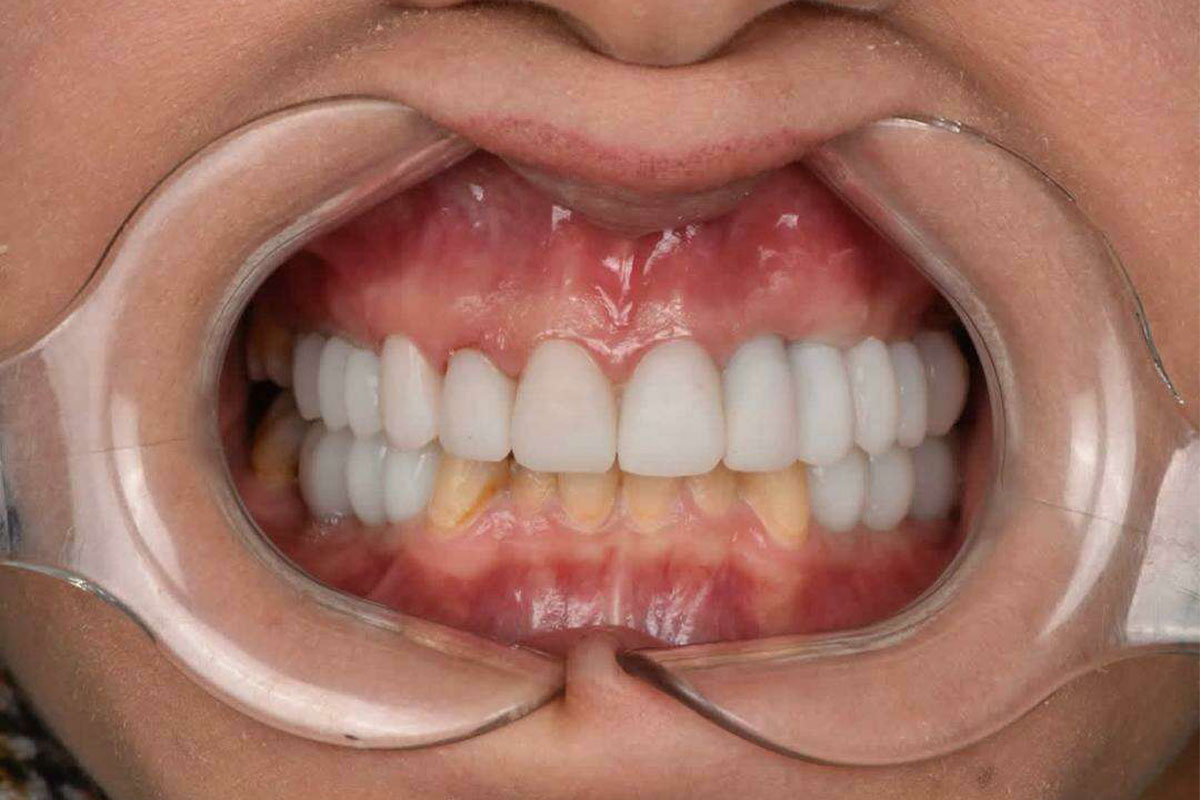




Frequently Asked Questions about Dental Laminates
Does ceramic laminate damage tooth enamel?
It is performed by scraping very little of the tooth enamel surface and generally does not cause serious damage to the tooth structure, provided it is performed by a specialist.
Is it possible to have tooth sensitivity after installing laminate?
Yes, usually a short-term sensitivity to heat or cold may occur, which improves within a few days to a few weeks.
Who cannot use dental laminates?
People with severely decayed teeth, active gum problems, or dental habits such as severe teeth grinding may want to consider additional treatments or explore other options before getting veneers.
Can dental laminate be combined with composite veneer?
Yes, in some cases, dentists use both methods in combination to improve the appearance of teeth.
How long does dental laminate take?
Typically, the entire dental laminate process takes a few days to a week, depending on the steps of molding and manufacturing the laminate in the laboratory.

